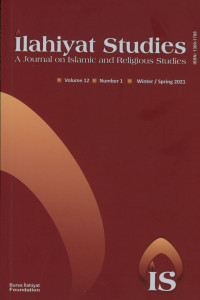Der Eine und das Andere : Beobachtungen an islamischen häresiographischen Texten, by Josef van Ess
First paragraph: Josef van Ess’s latest work is a monumental study of the Islamic heresiographic tradition in Arabic and in Persian literatures. In the style of his colossal history of early Islamic theology, the six-volume Theologie und Gesellschaft (Berlin & New York: Walter de Gruyter, 1991-1997), van Ess surveys in this book writings about religious divi-sions within Islam. We have come to call these works heresiographies, although that word, which has its origins in Christian literature, does not fully apply. There are not in Islam heresies like there are in Christianity. Where there is no center of orthodoxy there can be no heresies, van Ess argues, and in Islam orthodoxy has always been in the eye of the beholder, meaning the author of whatever heresiography one is looking at (II, 1298-1308).
Der Eine und das Andere : Beobachtungen an islamischen häresiographischen Texten, by Josef van Ess
First paragraph: Josef van Ess’s latest work is a monumental study of the Islamic heresiographic tradition in Arabic and in Persian literatures. In the style of his colossal history of early Islamic theology, the six-volume Theologie und Gesellschaft (Berlin & New York: Walter de Gruyter, 1991-1997), van Ess surveys in this book writings about religious divi-sions within Islam. We have come to call these works heresiographies, although that word, which has its origins in Christian literature, does not fully apply. There are not in Islam heresies like there are in Christianity. Where there is no center of orthodoxy there can be no heresies, van Ess argues, and in Islam orthodoxy has always been in the eye of the beholder, meaning the author of whatever heresiography one is looking at (II, 1298-1308).
- ISSN: 1309-1786
- Başlangıç: 2010
- Yayıncı: Bursa İlahiyat Vakfı
Sayıdaki Diğer Makaleler
Modernization and the Reproduction of Everyday Life in Konya
The Essentials of Ibāḍī Islam, by Valeria J. Hoffman
Prophetic Niche in the Virtous City: The Concept of Ḥikmah in Early Islamic Thought, by Hikmet Yaman
The Significance of the Successors (al-Tābiʿūn) as Reflected in Early Ḥadīth Collections
Method, Structure, and Development in al-Fārābī’s Cosmology, by Damien Janos
Der Eine und das Andere : Beobachtungen an islamischen häresiographischen Texten, by Josef van Ess
Humor in Early Islam, by Franz Rosenthal, with an introduction by Geert Jan van Gelder
